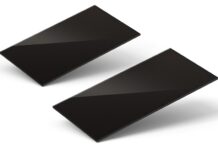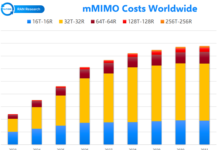Putting the electrodes to the test
To see how well their graphene electrodes would perform in practice, the researchers needed to incorporate them into functioning organic solar cells. For that task, they turned to the solar cell fabrication and testing facilities of their colleague Vladimir Bulović, the Fariborz Maseeh (1990) Professor of Emerging Technology and Associate Dean for Innovation for the School of Engineering.
For comparison, they built a series of solar cells on rigid glass substrates with electrodes made of graphene, ITO, and aluminum (a standard electrode material). The current densities (or CDs, the amount of current flowing per unit area) and power conversion efficiencies (or PCEs, the fraction of incoming solar power converted to electricity) for the new flexible graphene/graphene devices and the standard rigid ITO/graphene devices were comparable. They were lower than those of the devices with one aluminum electrode, but that was a finding they expected.
“An aluminum electrode on the bottom will reflect some of the incoming light back into the solar cell, so the device overall can absorb more of the sun’s energy than a transparent device can,” says Kong.
The PCEs for all their graphene/graphene devices — on rigid glass substrates as well as flexible substrates — ranged from 2.8 percent to 4.1 percent. While those values are well below the PCEs of existing commercial solar panels, they’re a significant improvement over PCEs achieved in prior work involving semitransparent devices with all-graphene electrodes, the researchers say.
Measurements of the transparency of their graphene/graphene devices yielded further encouraging results. The human eye can detect light at wavelengths between about 400 nanometers and 700 nanometers. The all-graphene devices showed optical transmittance of 61 percent across the whole visible regime and up to 69 percent at 550 nanometers. “Those values [for transmittance] are among the highest for transparent solar cells with comparable power conversion efficiencies in the literature,” says Kong.
Flexible substrates, bending behavior
The researchers note that their organic solar cell can be deposited on any kind of surface, rigid or flexible, transparent or not. “If you want to put it on the surface of your car, for instance, it won’t look bad,” says Kong. “You’ll be able to see through to what was originally there.”
To demonstrate that versatility, they deposited their graphene-graphene devices onto flexible substrates including plastic, opaque paper, and translucent Kapton tape. Measurements show that the performance of the devices is roughly equal on the three flexible substrates — and only slightly lower than those made on glass, likely because the surfaces are rougher so there’s a greater potential for poor contact.
The ability to deposit the solar cell on any surface makes it promising for use on consumer electronics — a field that’s growing rapidly worldwide. For example, solar cells could be fabricated directly on cell phones and laptops rather than made separately and then installed, a change that would significantly reduce manufacturing costs.
They would also be well-suited for future devices such as peel-and-stick solar cells and paper electronics. Since those devices would inevitably be bent and folded, the researchers subjected their samples to the same treatment. While all of their devices — including those with ITO electrodes — could be folded repeatedly, those with graphene electrodes could be bent far more tightly before their output started to decline.
Future goals
The researchers are now working to improve the efficiency of their graphene-based organic solar cells without sacrificing transparency. (Increasing the amount of active area would push up the PCE, but transparency would drop.) According to their calculations, the maximum theoretical PCE achievable at their current level of transparency is 10 percent.
“Our best PCE is about 4 percent, so we still have some way to go,” says Song.
They’re also now considering how best to scale up their solar cells into the large-area devices needed to cover entire windows and walls, where they could efficiently generate power while remaining virtually invisible to the human eye.


















